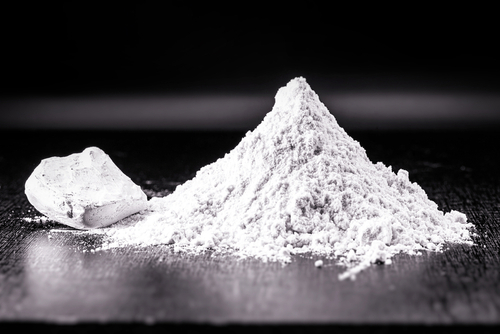Ceramic powder is a type of granular material that comprises different ceramics and oxides such as aluminum oxide, zirconium oxide, and silicon oxide, as well as carbides and nitrides. It’s widely used by industrial ceramic manufacturers in the production of different components.
Manufacturing methods and the use of powder are numerous, each of the methods featuring unique properties. Continue reading to learn more about how these powders are made and where they’re used.
How is ceramic powder made and used?
 Depending on the end use of a powder, you can opt for different production methods that yield different results and material properties. The following are the most common manufacturing methods and uses of ceramic powders:
Depending on the end use of a powder, you can opt for different production methods that yield different results and material properties. The following are the most common manufacturing methods and uses of ceramic powders:
Grinding/milling
Grinding or milling is a method that reduces the size of material’s particles until they reach the form of powder.
Compaction
Compaction converts powder from the granular form to a denser and more cohesive form through the process of cold pressing or hot pressing. The final product is called green material and it further undergoes sintering. Once the compaction process is over, the material doesn’t feature any significant defects and is possible to maneuver.
Injection molding
The process of injection molding is used to manufacture materials with complex geometries and it’s convenient for the production of large quantities. It’s a versatile process that can be used for both non-oxide and oxide ceramics. The final products of this method feature high precision and quality, which is why it’s the favored ceramic manufacturing process for companies looking for stringent tolerances and high-precision parts.
Tape casting
Tape casting is most commonly used in the production of substrates for integrated circuits and structures for their multilayer capacitors and packages. A powder mix with a polymer binder and an organic solvent is continually cast on a carrier surface made of a non-stick material such as Teflon.
Using a knife edge, this mixture or slurry is further spread to a required thickness onto the smooth surface. Once it dries, it’s fit for further processing.
Slip casting
Slip casting is typically used in pottery to produce shapes that aren’t easy to create on a wheel. While it’s time-consuming and can take up to 24 hours, it renders final products of high consistency and precision.
When you place the powder in a suspension, it forms a slip that goes into a porous mold. Once the mold dries, it forms a solid layer.
Gel casting
In gel casting, you mix the powder with a free radical initiator, crosslinker, and monomer and add it to an aqueous suspension. The mixture comprises a polymerized binder for higher rigidity, which is why it takes on the form of a gel. This gel mixture is further poured into a mold to solidify.
After solidification, the mixture is removed from the mold and dried, resulting in a green body that further undergoes the process of sintering.
Extrusion
Through the process of extrusion, you can form ceramics into shapes. The powder goes through a die that features a specific cross-section. Extrusion can be cold, warm, or hot, and it yields final products of high strength.
Who are the leading industrial ceramics manufacturers?

We’re reliable advanced ceramic manufacturers who partner with both domestic and international clients from the domain of different industries, including energy, filtration, automotive, electronics, and medical. Email us at sales@wundermold.com or reach out to us by phone today.